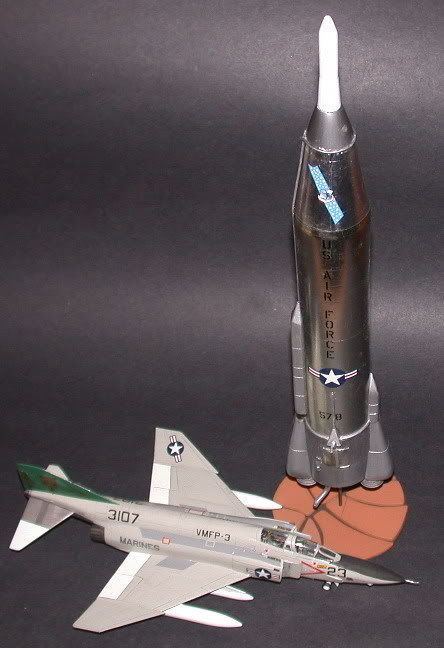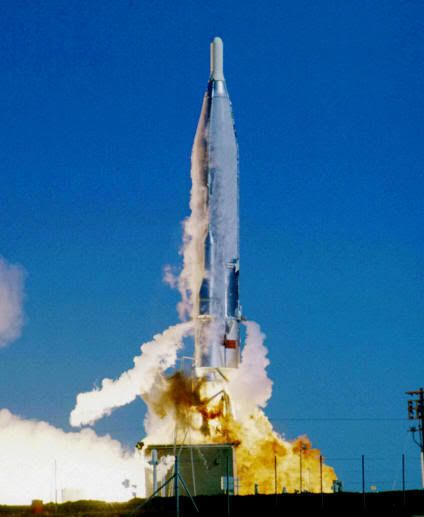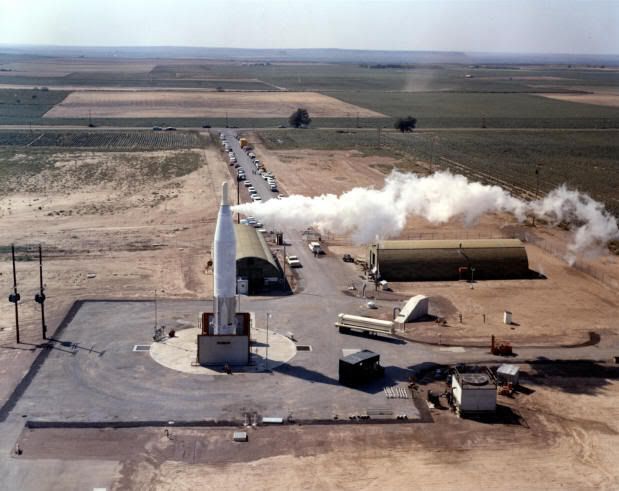I worked on the Atlas F ICBM at Dyess AFB, Texas, in 1964-65 as my first assignment in the USAF. I recently came across a 1/72 Anigrand resin kit of the Atlas that can be done as an A, B, C or D model. I wanted to modifiy it into an F model, but found this to be totally non feasible. It would be about like trying to modify an F/A-18 Legacy Hornet into an E or F Super Hornet.
I have found several major errors in this kit that will have to be corrected at the beginning.
- The full scale Atlas had the LOX & RP-1 tank section made out of stainless steel that was only a few thousandths of an inch thick. Essentially just a big metal balloon. The model has panel lines around the circumference of the tank that would scale out to about an inch deep. The first picture shows them with one side filled and the other side already sanded down. The sanded down half is the belly of the missile and the unsanded half is the top.
- The long pipe in the 2nd picture is the LOX transfer line from the LOX tank in the upper part of the missile down to the engines. The instructions show this installed on the belly side when it should be on the top side.
- All three nose cone options have huge, vertical, sawtooth striations all the way around. This is correct for the early versions with a test payload. The RV adapter for the ICBM had a smooth finish.
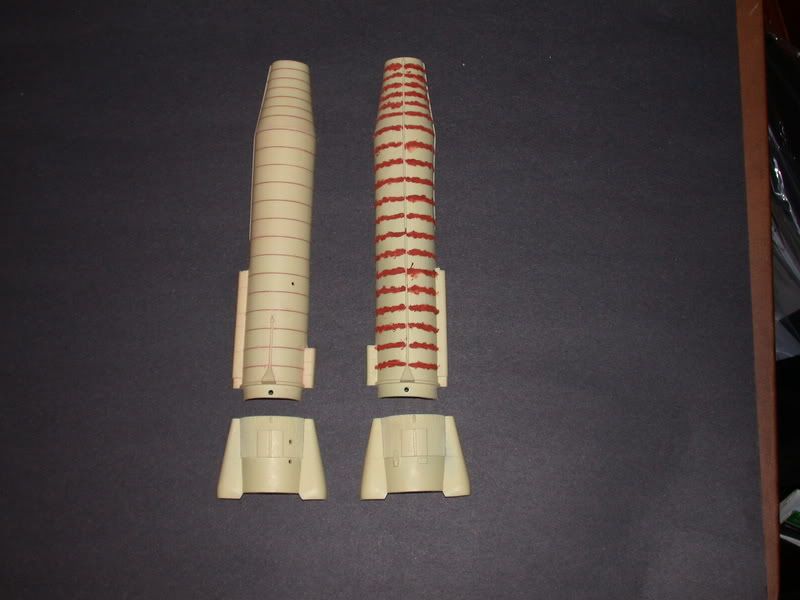 ,
, 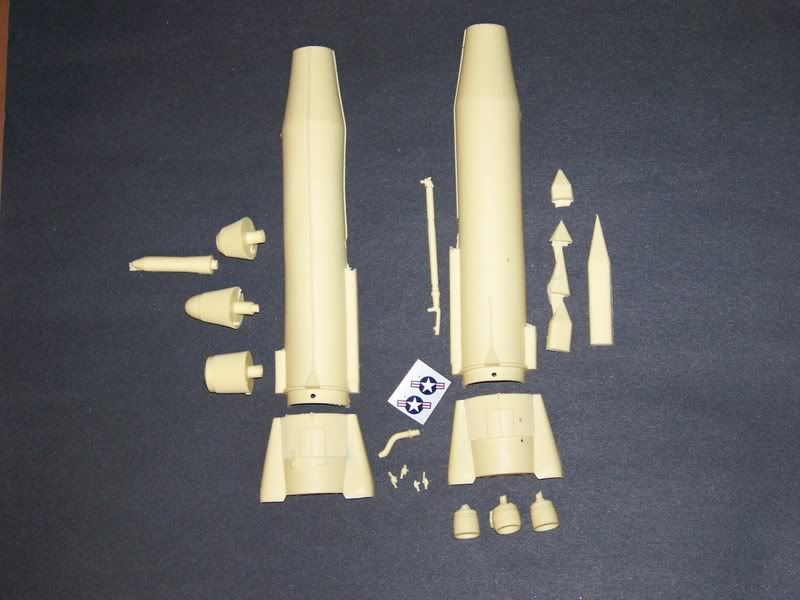
I got the panel lines filled in and sanded, then when I was trying to line up the two tank halves, I busted a big chunk out of one half. You can see the irregular line in the first picture where I patched in back together. Both pictures show the horrible fit of the two halves. I have them glued together at the bottom and just sitting in the skirt section which is also glued together. I had to place a scab patch inside the tank halves and will slowly glue them together from the bottom towards the top. The fairings on the skirt over the booster engines have a horrible gap and the RV adapter doesn’t fit very well either and both areas will need some work. This is my first all resin kit and I am certainly NOT impressed with it.
 ;
; 
Darwin, O.F. [alien]
I probably should have posted this over in rocket & space section, but it seems the traffic level over there is about the same as the number of pedestrians walking across Death Valley.
 ,
, 
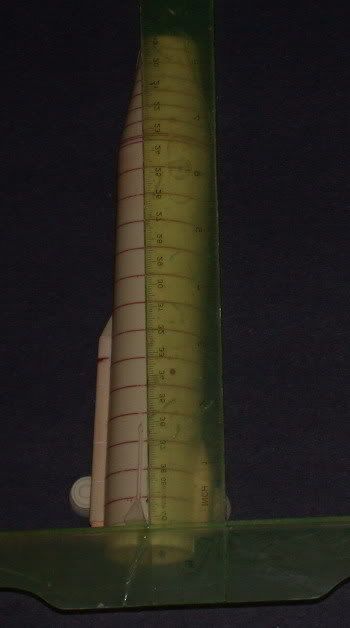 .
. 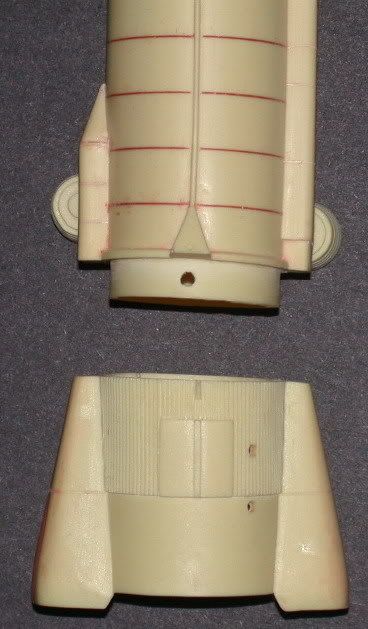
 ,
,  ,
,  ,
,  ,
, 
 ,
,  ,
, 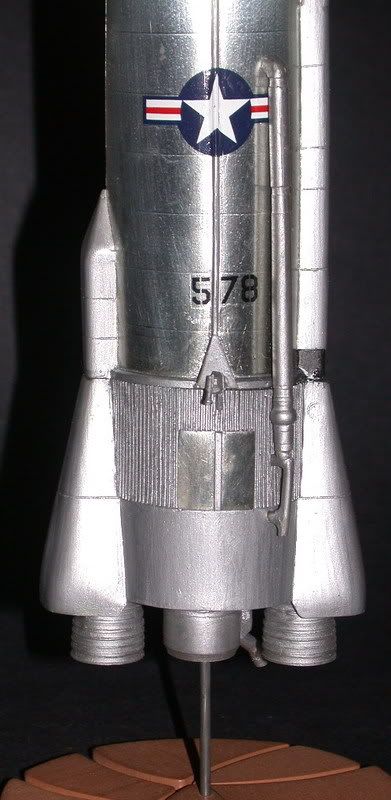 ,
, 